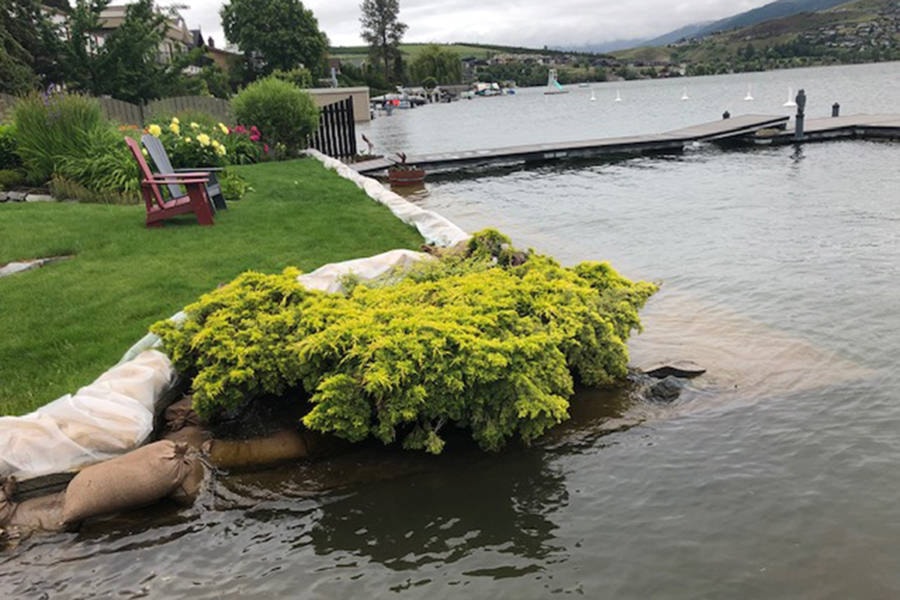Lauren Lypchuk’s retaining wall on her Westkal Road home on Kalamalka Lake in Coldstream is, as of Tuesday, June 16, under eight inches of water.
Lypchuck and her husband, Ward, have done everything they can, she said, to protect their home from the high water levels. With the lake beyond its full level, boats remain on the water and a problem for property owners.
The Coldstream couple is asking boaters politely to refrain from the popular activity to protect properties and erosion on the Okanagan Rail Trail until water levels come down.
The District of Coldstream has closed three boat launches as of May 28 – Kinloch, Kalavista, Westkal – on the lake’s north end but the launch at Kekuli Bay Provincial Park is open.
The district has asked lakeshore property owners to continue to protect properties, and for boaters to go 10 kilometres an hour or less and to stay away from the shoreline — a move that would protect the Okanagan Rail Trail.
“Slowing down of boats does not mitigate the problem in that there are still some boats on the lake that go slow on purpose creating large wakes that continue to breach our sandbag wall, that impacts docks that are already underwater and are being held with barrels on top and continue to erode lakeshore properties and the rail trail,” Lypchuk said.
“The amount of debris that is going into the lake due to excessive high-water levels and from these boat wakes is not acceptable. The erosion that is happening does not need to happen to this degree and would not happen if theses boats were restricted from making boat wake/waves at least temporarily while the lake is so high and beyond capacity. Further, Kal Lake is a source for drinking water and needs to be protected.”
Lypchuk said she and her husband have more than 200 sandbags out on their property and would not need to do more if not for the boats on the lake.
And she is specific about the vessels.
“It’s the very large boats made for creating waves to surf on,” she said. “These boats are slow-moving and carry a large amount of water so they can create waves that are two- to three-feet high or higher.
“It doesn’t matter where they are in the bay. These large waves reach shore and are causing damage.”
The district issued a release Monday, June 15, reminding boaters of the negative impact boat wakes can have on shoreline properties and erosion after a weekend full of rain pushed the level of Kal Lake closer to capacity.
“Boaters and Personal Watercraft (PWC) users should avoid creating waves near the shoreline that can damage property or contribute to shoreline erosion,” the district said. “Transport Canada advises that anyone operating a power-driven boat in B.C. must adhere to a speed limit of 10 kilometres per hour within 30 metres of shore. Slower speeds are strongly encouraged while water levels remain high.”
Lypchuk said if boaters can’t temporarily hold off from boating, then please consider the north end of the lake to be a no-wake zone.
She said Coldstream Mayor Jim Garlick has been supportive of the issue but restricting boats is a federal issue.
